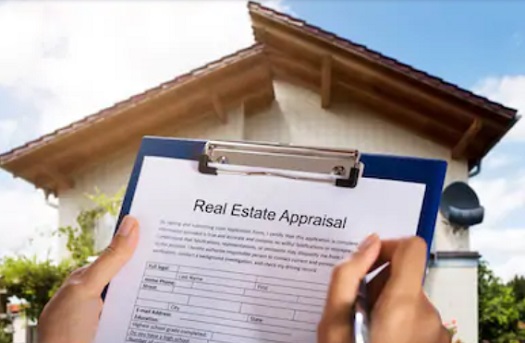Selling your house might feel like an overwhelming task. You’re trying to grasp an understanding of how to list your home for the highest return.
At the same time, you’re distracted and spread thin by planning for your upcoming move. You can simplify and expedite the process when you educate yourself ahead of time how to prepare.
Here are six steps you need to know before you list your property for sale.
Step One: Find and Work with an Expert Real Estate Agent
Don’t underestimate the value of a qualified real estate agent when selling your house.
A seller’s agent doesn’t only show your house to potential buyers. From day one, your agent goes to work to help you discover ways you can get your house ready so that it sells faster and for a higher price.
He or she can assist you in getting the property ready for showings, for appraisals, and inspections.

Real estate agents can guide you in understanding the difference between a buyer’s market and a seller’s market and how to price your home to sell fast.
Further along in the transaction, your agent will help you carefully consider offers and negotiate terms if necessary. Additionally, real estate agents can help you understand and organize the contract and paperwork – of which there are stacks.
Step Two: Competitively Price Your House for Sale
One of the most challenging aspects of selling your home is parting with the memories you made. Whether you’ve lived in your house for two years or 22 years, you’ve experienced milestones and miracles and overcome personal challenges.
Unfortunately, you can’t include sentimental value when you’re trying to price your house. Detach your heartstrings from the structure before you list.
Your real estate agent will supply you with a comprehensive market analysis, or CMA. This report provides data regarding recently sold houses in your area that are similar to yours in size and style.

The reason it’s essential to review a CMA is so that you can understand what buyers in your area are willing to pay for houses like yours.
Your property is subject to fair market value, with fluctuates with supply and demand. In other words, it may have gained worth over time, or it may have declined in value. Knowing what buyers are willing to pay can help you price your home attractively.
It can be tempting to list your house for a hopeful price with the idea that you can reduce it if the property doesn’t sell. This strategy can backfire. The more times a home’s price is reduced, and the longer it stays on the open market, the less alluring it is to buyers.
House-hunters begin to wonder what’s wrong with the house, why it’s not selling. For this reason, it’s critical to price your home effectively from the beginning.
Remember, the asking price is not always the same as the sales price.
Step Three: Staging Your House for Sale
Staging your house for sale is a multi-step process designed to intrigue buyers. Think of it as getting your home ready to attend a job interview. You want it dressed to impress.
The first part of staging has multiple benefits. It’s called decluttering your space. Decluttering can also be one of the more difficult steps – and one you’re less likely to hire help for.
Decluttering starts with removing any trash or unwanted items. It also means safely storing away belongings you want to keep but won’t need before you move.

This phase is an ideal time to think about having a yard sale or donating to charity. It also helps you pack and prepare for your new journey.
It’s time to stow away those family portraits, children’s’ drawings, your book collection, religious items, sports paraphernalia, political statements, or anything that might make a buyer feel like a guest in your home.
You want the buyer to be able to imagine themselves living in the space. Give them room to imagine filling the rooms with their things.
Many sellers opt to hire professional cleaning services to spiff up the house so that it’s spic-and-span. Cleaning can certainly be a DIY project, but take into account the baseboards, crown molding, ceiling fans, air vents, under the sinks, behind the toilets, and in all the crevices, nooks, and crannies. Clean sells.
Don’t forget the outside! Curb appeal is your property’s only chance to make a powerful first impression. Give the lawn a haircut. Spruce up the bushes. Power wash the exterior. Replace torn or bent screens. Paint the porch.
Step Four: Showing Your Home
On the days your agent is showing your property, it’s best if you’re not home. You’ll also need to make arrangements for any pets.
Pets can be a distraction, spawn allergies, or make house-hunters feel unsafe. It’s also not always a pleasant experience for the animals.

Your agent will discuss a marketing strategy with you to determine how to attract the right buyers.
Marketing your house for sale may include a virtual tour or slideshow, open houses, or private tours.
Step Five: Reviewing and Negotiating Offers
The way you consider offers is going to differ significantly depending on whether you’re in a buyer’s market or a seller’s market.
You’ll also be affected by your personal timeline for moving, and by contingencies. Another factor that comes into play is whether a buyer has been pre-approved for their home mortgage loan. You can’t always opt for the offer with the highest price.

One of the most frequent contingencies in real estate is that a buyer’s current house must sell before the transaction is valid.
For a seller who doesn’t want to take the risk of a buyer’s sale falling through, a pre-approved first-time buyer is a solid choice.
Your real estate agent can’t make your decision for you, but you can certainly lean on them for expertise and support.
Step Six: The Closing Process
Once you’ve accepted an offer from a buyer, your property must undergo a title search, appraisal, inspection, and possibly a survey.
The title search proves that the house has been deemed clear of tax holds or liens so that it can be sold legally.
An appraisal assesses the overall condition of the property, fair market value, and determines a fair price for the home. This appraisal assures your lender that the property that you are purchasing is worth the amount of money you’re borrowing.

The inspection verifies that the structure is sound, free of pests, and all the major systems such as heat and air are correctly functioning.
The closing process can take up to 90 days, so you’ll need to practice patience.
When the appraisals, inspections, surveys, and title checks have all been handled, the property is ready to close.
As the seller, you are not required to attend the closing meeting if you’ve already made arrangements with your agent or attorney. At the closing table, all the final documents are signed, closing costs paid, and the buyer becomes the new owner.
By this stage, you should have already vacated the premises as you’ll no longer have the keys.
You may not get your payment the day of closing. Talk with your real estate agent before you list to fully understand the financial aspects of listing your house for sale.
Have Questions? Ask April!
Give April D. Robinson a call at 727-BUY-SELL (727-289-7355) to learn more about local areas, discuss selling a house, or tour available homes for sale.


